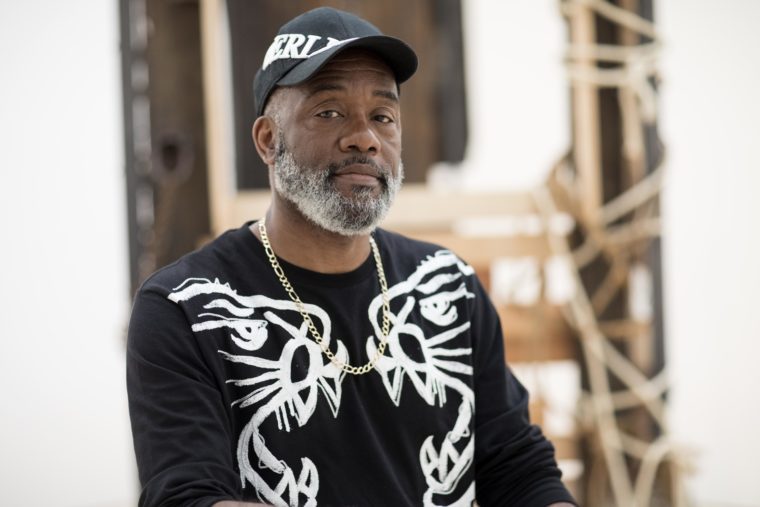Brick and steel and burnt, broken wood.
With his multimedia sculpture “In the morning, still I rise” (2018), artist Ron E. Young explores the materials that built north St. Louis, where he was raised, as well as the policies and priorities that enabled its decay.
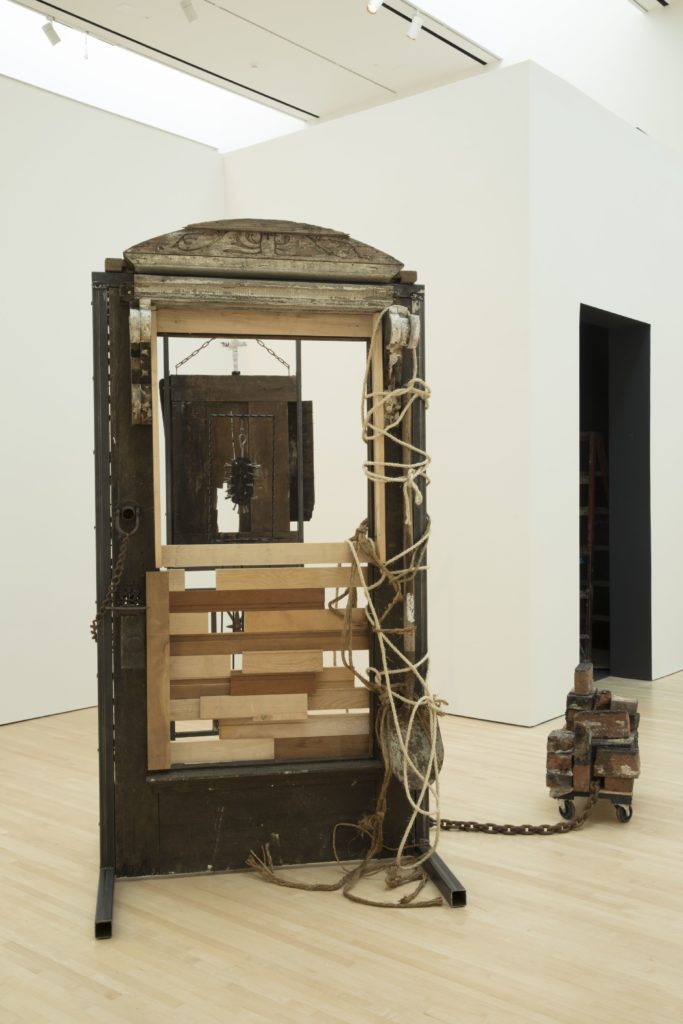
On Friday, May 4, the Mildred Lane Kemper Art Museum will present “In the morning” as part of the 2018 MFA Thesis Exhibition. The exhibit will showcase works by 18 graduating master of fine arts candidates from the Sam Fox School of Design & Visual Arts.
In this Q&A, Young discusses his work, life in St. Louis and the beauty of rough materials.
You grew up near The Ville and taught high school art for more than 30 years. For most of that time, you also practiced as a figurative painter. What prompted the switch to sculpture?
Painting had gotten methodical. I’d design on the computer, plan everything out … there was very little surprise or spontaneity.
When I came back to school, there were things I wanted to say that couldn’t be addressed in the way I’d been painting. I needed a new visual language.
Your recent work incorporates vintage tools, chains and salvaged construction materials. What drew you to those objects?
It began with the concept of the door. The door is a metaphor for access, for opportunity. The door allows you to transition from one space to another. If you’re on the outside, somebody has to let you in.
So I started collecting doors, which led to other things. The tools symbolize work and labor. They also remind me, not just of my own childhood, but of my grandfather. He had lots of old tools — hand-crank drills, soldering irons …. I remember him working and me just getting in the way!
But I always liked those tools. They were mostly handmade, and even ones that were mass-produced had a human touch. They were meant to last.
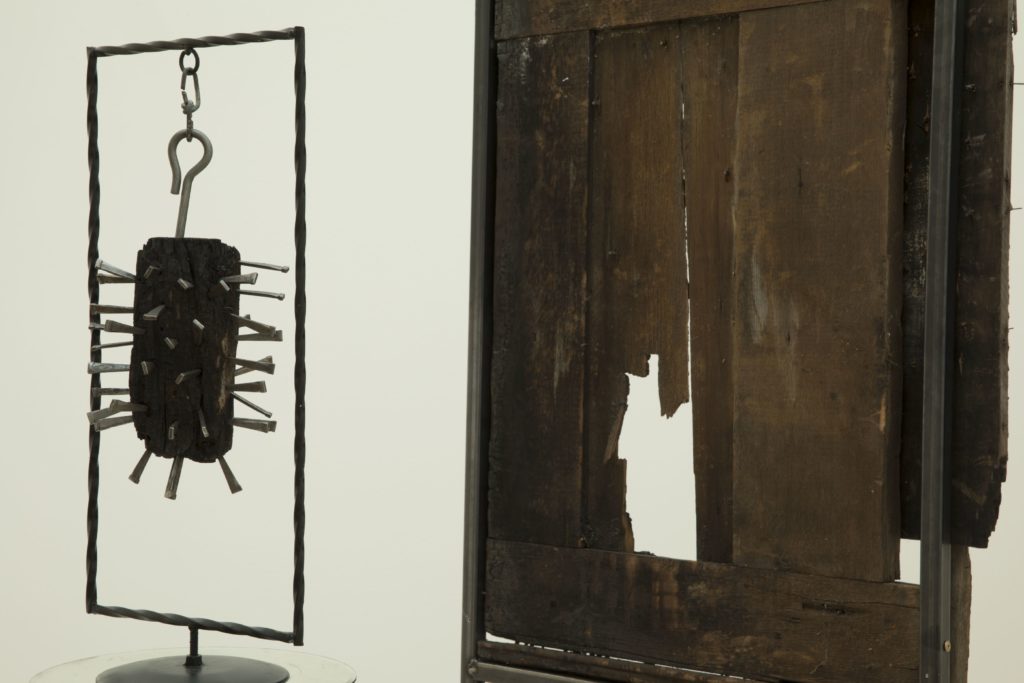
You’ve also worked with billboard painters and have brought those skills to mural projects — including one in Ferguson after the death of Michael Brown. How did that come about?
I lived in Ferguson, my kids went to Ferguson K-12, I have nothing but good things to say about the school district. But what happened in Ferguson was really, really ugly. It exposed things that go back decades. I knew I wanted to do something, I just didn’t know what.
Then, on Thanksgiving Day, my son and I were driving down Florissant Avenue and saw these guys painting boarded-up windows. My son said, “Dad, you need to do some of that.” Saturday morning, I took my paintbrushes, found a group of college kids and said, “Can I help?”
We did a mural on the side of a restaurant. It was totally spontaneous. I also did some collages for the “Hands Up, Don’t Shoot” exhibition. Ferguson made me realize that, as an artist, I need to address these things on a more regular basis.
You’ve spent a lot of time photographing and salvaging materials from Old North, Carr Square and St. Louis Place. What drew you back to those neighborhoods?
I was always interested in architecture. But being from north city, there was also something I couldn’t quite put my finger on. Why are all of these buildings falling apart?
Then I learned about the brick thieves. They’ll set fire to a building, not to burn it down, but to loosen the mortar.
I wanted to draw attention to that — and not just the guys who are stealing the bricks, but also the people reselling bricks for new construction and the shell companies that buy up homes and let them deteriorate.
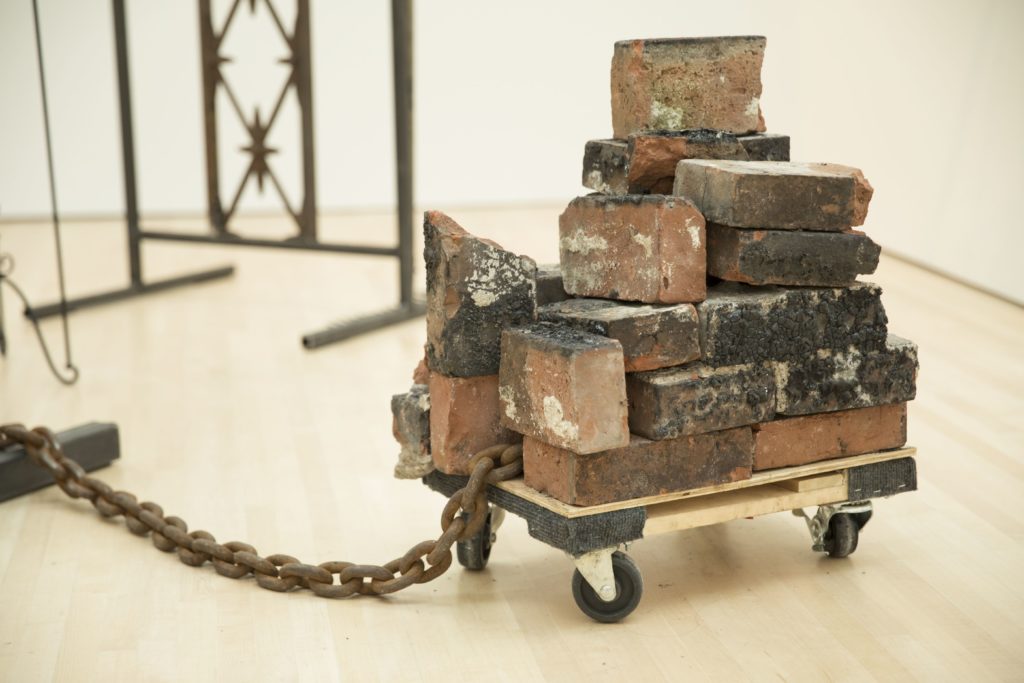
The National Geospatial-Intelligence Agency’s new $1.75 billion western headquarters, now under construction, is also reshaping the north side.
That’s right. They’d already started clearing things out, cordoning off the site, demolishing homes. I didn’t realize it at the time, but I was really documenting that process.
I brought a lot of stuff back to the studio. Sometimes I knew what I wanted to do with it, sometimes I didn’t. One door, I must have dragged it three blocks. In the pouring rain. It wouldn’t fit in my SUV. I had to come back the next day.
There’s memory in these materials, and melancholy, and some anger. They were the foundation of the city, and now they’ve eroded. That sense of history and pride has scattered.
But there’s love in there too. I think of myself as preserving artifacts. These are beautiful objects. They represent the community that I come from.
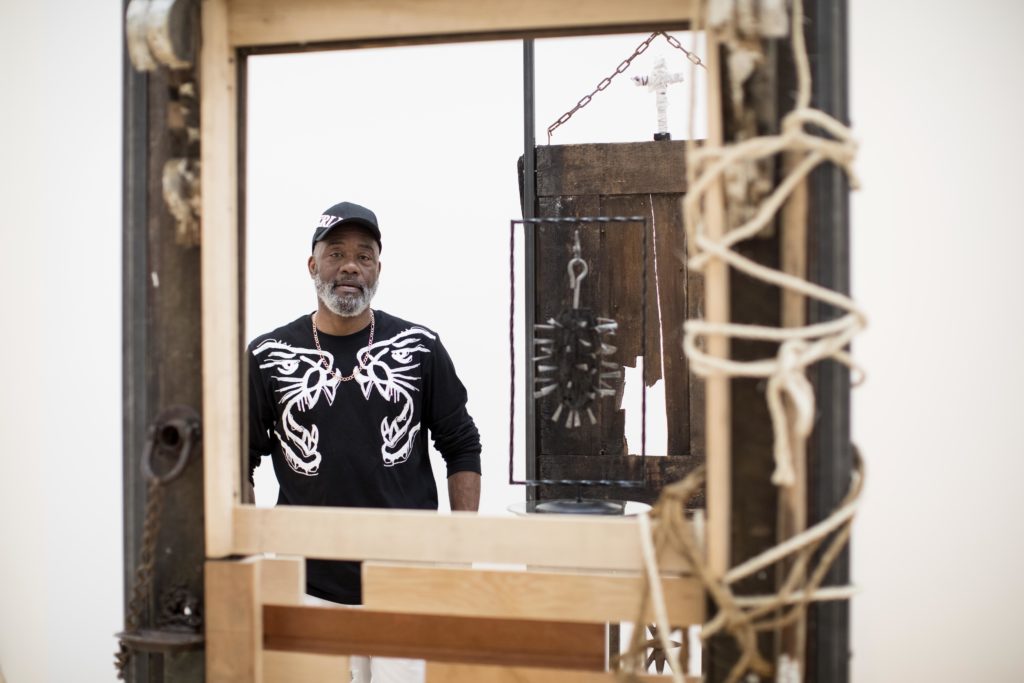
The 2018 MFA Thesis Exhibition opens with a reception from 7-9 p.m. Friday, May 4, and remains on view through May 21. The Kemper Art Museum is located near the intersection of Skinker and Forsyth boulevards. Regular hours are 11 a.m.-5 p.m. daily except Tuesdays. The museum is closed Tuesdays.
For more information: call 314-935-4523; visit kemperartmuseum.wustl.edu; or follow the museum on Facebook, Twitter and Instagram.
Editor’s note: The current transformation of the east end of Washington University’s Danforth Campus affects parking and access to the museum; see here for details. As part of that transformation, the museum will close for renovations and expansion in summer 2018. The museum will reopen in fall 2019.
